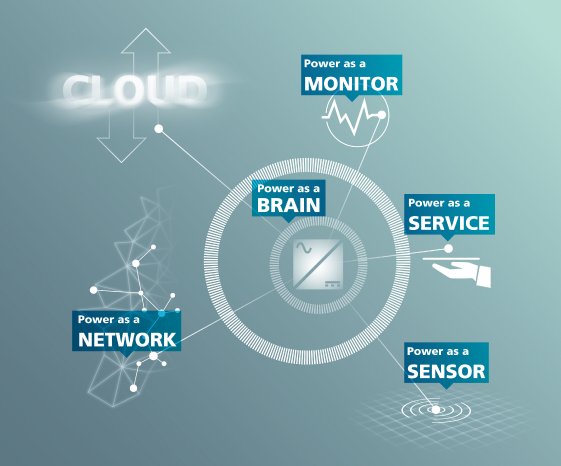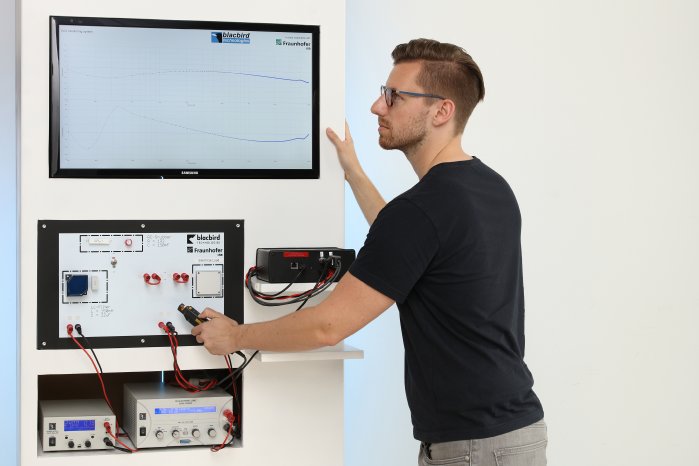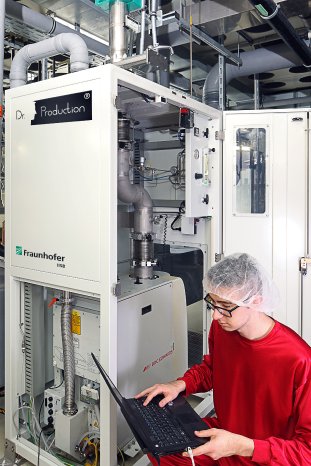The Fraunhofer Institute for Integrated Systems and Device Technology IISB in Erlangen offers innovative power electronic solutions that are used in conversion, supply, and storage of electrical energy. For the first time, Fraunhofer IISB revealed at PCIM Europe 2017 its ambitious activities in the area of Cognitive Power Electronics 4.0, combining its core competencies in the fields of power electronics with advanced data analytics to enable smart digital functionalities at power electronics level.
Cognitive Power Electronics 4.0 by Fraunhofer IISB
Cognitive Power Electronics 4.0 by Fraunhofer IISBPower electronic devices are at the very heart of every system, application and production machine in industry, energy management, building appliances, mobility, and more. Right within the power electronic devices, electrical parameters are continuously available that indirectly characterize the current condition of an application or machine (e.g., energy grid, production machine, battery, motor). Up to now, those data are partially used to monitor the electronics in itself, but not yet for monitoring and optimization of the overall system.
With Cognitive Power Electronics 4.0, existing power electronic devices are augmented by “intelligence”: additionally embedded electronics collect the electrical parameters and do a preprocessing. Where applicable, external sensors are added as additional data source. The following step is of high importance: the identification and validation of correlations between the collected data and the behavior of the overall system or parts of it. The transfer of the found correlations into algorithms then allows the actual construction of the intelligent power electronics, capable of model-based decisions to realize smart systems.
Application in component analysis
Complex power electronic systems require highly reliable components that interact smoothly. To ensure highest quality and to characterize the dynamic behavior of components, test specimens are electrically stimulated in order to provoke a measurable system response, which allows the derivation of relevant parameters.
The application of Cognitive Power Electronics 4.0 to this scenario allows it to go beyond state-of-the-art oscilloscope-based analysis: A new instrument was developed that uses artificially generated noise signals to fully characterise power electronic components in the frequency range. This allows the measurement of individual devices as well as system networks in real time at high currents and under voltages up to 1000 volts. By means of a special evaluation software, characteristic parameters and dynamic behavior can be determined very accurately.
Application in vacuum systems
In semiconductor manufacturing, many processes rely on sophisticated vacuum systems. The interaction between process equipment and vacuum system may be quite complex: e.g., in deposition processes, the vacuum system is contaminated from the running process.
The application of Cognitive Power Electronics 4.0 to this scenario allows the continuous collection and visualization of the electrical parameters from the power electronics inside the vacuum system, providing 100% real-time facility state monitoring to the process engineers. Beyond that, a machine-learning algorithm was trained to predict the rest of useful life of the vacuum system until contamination gets critical. Based on this prediction, safety is improved and maintenance actions can be planned in-line with upcoming processing schedules.
Application in arc detection
The ongoing electrification of automobile auxiliaries imposes increasing power demands on the electric energy network. To reach these demands at reasonably low currents, an increasing number of 48 V loads is currently finding its way into vehicles. Opposed to the traditional 12 V energy networks, arc faults can occur in 48 V DC networks. These arc faults must be detected and eliminated before they can cause hazardous damage.
The application of Cognitive Power Electronics 4.0 to this scenario allows integrating arc detection functionality into electronic power distribution boxes: The load current is permanently monitored by the existing sensors of the power distribution box. A recurrent artificial neural network that was trained to detect the current frequency patterns of arc faults is executed in real-time by an FPGA. Once an arc fault occurs, the power distribution box can thus detect and safely eliminate it by disconnecting the respective load path from the power source.
Implementation scenarios for Cognitive Power Electronics 4.0
Actual implementations of Cognitive Power Electronics 4.0 may start modest by merely collecting and fusing data and providing it to other systems (“Power as a Sensor”). In more complex applications, Cognitive Power Electronics 4.0 analyses the collected data onboard and either monitors the overall system (“Power as a Monitor”), or takes action in system control (“Power as a Brain”). Finally, systems with embedded Cognitive Power Electronics 4.0 can be connected with each other or with cloud systems (“Power as a Network”) and offer flexible and adaptive functionality (“Power as a Service”).
The latest developments by Fraunhofer IISB are presented at PCIM Europe, the international leading exhibition for power electronics, intelligent motion, renewable energy and energy management, taking place from 5 to 7 June 2018 in Nuremberg, Germany, at booth 6-339.




